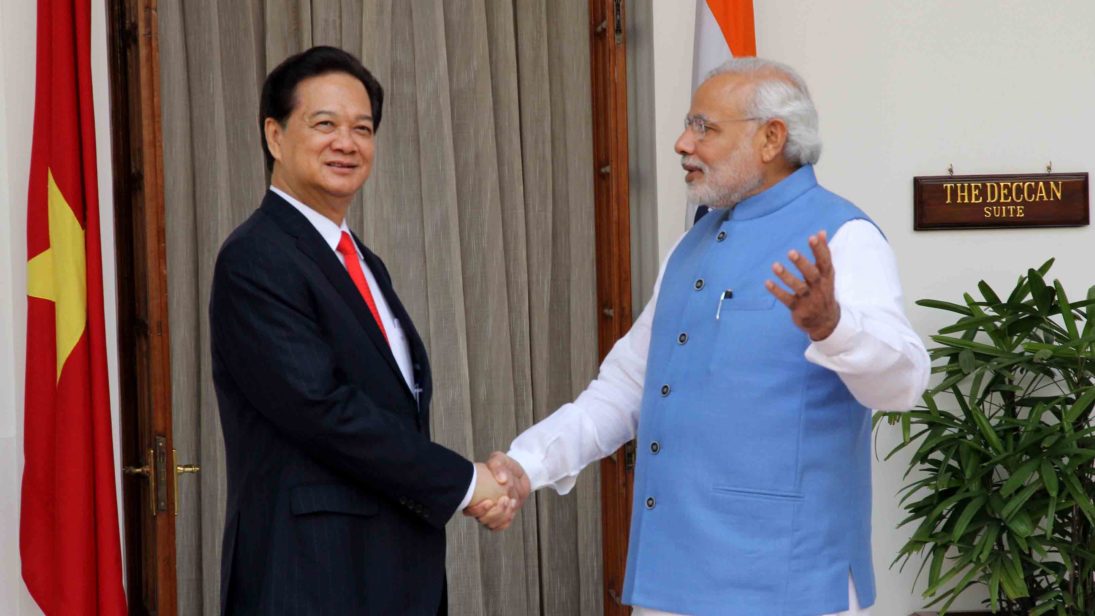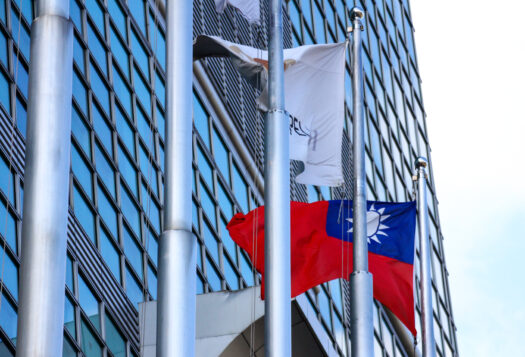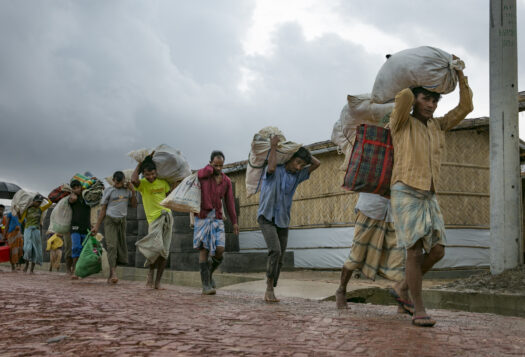
Indian Prime Minister Narendra Modi’s visit to Vietnam this week comes amidst a busy diplomatic season with him also attending the G20 Summit in China, the ASEAN-India Summit in Laos, and the East Asia Summit, also in Laos. Much has changed between New Delhi and Hanoi since 2001, the last time an Indian PM visited Vietnam. Most notably, the two countries have struck a strategic partnership and have bolstered military cooperation in light of China’s expanding capabilities. A further deepening of that partnership is expected during this visit.
It is interesting to note that the September tour to Southeast Asia (SEA) will be Modi’s third in a series of major visits to the region after his government announced the Act East policy in November 2014. India’s Act East is an active attempt to rectify the inherent weaknesses in its engagement with Southeast Asia, such as delayed projects (the India-Myanmar-Thailand trilateral highway, for instance) and bureaucratic inertia. Even before the Act East policy emerged, India made important progress in the economic, political and maritime spheres with Southeast Asia; for example, ASEAN-India trade reached $79.3 billion in 2012, exceeding the target of $70 billion. However, there has been general skepticism among ASEAN countries about New Delhi’s commitment towards the region because of India’s inability to deliver on infrastructure projects in a timely manner and its reluctance to take on a larger security role in the region. With the need to correct this perception, PM Modi has showcased a more proactive policy, signifying a sense of urgency in engaging Southeast Asia more effectively.
Vietnam forms a crucial part of India’s Act East policy, with a focus on defense cooperation. India’s engagement with Vietnam is a move to balance against China and its military muscle-flexing in Southeast Asia. Although India’s core interests lie in the Indian Ocean Region (IOR), it also has an interest in the South China Sea (SCS) because 55 percent of its trade travels through the region. Furthermore, India is concerned that China will replicate in the IOR the maritime aggression it shows in the SCS, especially as it establishes a stronger navy.
Unsurprisingly, a large number of high-level ministerial exchanges underline the strategic cooperation between India and Vietnam. In August 2014, President Pranab Mukherjee visited Vietnam, and both countries jointly asserted the importance of “freedom of navigation in the East Sea/South China Sea” and the need to “resolve disputes through peaceful means in accordance with universally recognized principles of international law, including the UNCLOS-1982.” Another landmark development of that trip was New Delhi’s $100 million line of credit to Hanoi for defense purchases. Other important visits include Vietnamese Prime Minister Nguyen Tan Dung’s visit to India in October 2014, Vietnamese Minister for National Defence Phung Quang Thanh’s visit to India in May 2015, and Indian Defence Minister Manohar Parrikar’s visit to Vietnam in June this year. All these meetings have paved the way for improved strategic and military cooperation between the two nations.
What makes this upcoming visit to Vietnam noteworthy is the timing and symbolism surrounding it. PM Modi’s visit comes in the wake of three important China-related developments: growing unease between New Delhi and Beijing due to strategic divergences, The Hague tribunal’s verdict in favor of the Philippines against Chinese claims in the South China Sea, and increasing Chinese naval activity in the IOR.

Firstly, India and China have recently had several high-profile disagreements in recent months. The most prominent of these is China’s blocking of India’s NSG bid at the South Korea plenary meeting. The unease between the two countries also results from Beijing’s move to block New Delhi’s United Nations bid to ban Jaish-e-Mohammed chief Masood Azhar. Another major tension is India’s reiterated opposition to the China-Pakistan Economic Corridor (CPEC) project as it passes through what India considers “Pakistan-occupied Kashmir.” Given the dampening of relations between China and India in recent months, and the fact that the state-run Global Times called India’s involvement in the SCS as an “unnecessary entanglement with China over the South China Sea debate, ” any India-Vietnam engagement or discussion on the SCS will be keenly watched in Beijing. India’s involvement not only threatens China’s pursuit of dominance in the region but is also seen as a way to internationalize the South China Sea dispute, which Beijing strictly opposes.
Secondly, Modi’s travel to Hanoi comes soon after the international tribunal verdicton arbitration on the SCS, which unanimously supported the Philippines’s case against China’s contentious nine-dash line. Predictably, China categorically rejectedthe verdict. Even though Vietnam was not involved in the legal case, the ruling was seen as an encouraging sign for countries, such as Vietnam, which have other territorial disputes with China. Responding to The Hague verdict, India “urged all parties to show utmost respect for the UNCLOS, which establishes the international legal order of the seas and oceans,” which seems an implicit critique of the Chinese position.
Finally, India-Vietnam ties have assumed larger significance after increased Chinese activity in the IOR. As maritime expert Abhijit Singh has argued, “With Beijing deploying Chinese submarines under the flimsy pretext of anti-piracy operations, New Delhi believes the People’s Liberation Army Navy (PLAN) is preparing for a larger strategic thrust in the Indian Ocean.” As alluded to previously, India views Chinese activity in the SCS as an indication of its intentions in the IOR; thus, India wants to strengthen its relationship with Vietnam and its overall position in the SCS to send a message about its resolve in the IOR.
These developments will undoubtedly strengthen the urgency of India and Vietnam’s negotiations during the visit. The relationship between India and Vietnam will likely evolve “to a more comprehensive level,” with movement on economic as well as defense-oriented agreements. Major deliverables of PM Modi’s trip may include finalization of defense procurements (such as the sale of patrol boats for coastal security) as part of the $100 million credit line. There is also the likelihood of discussions on the export of the Indian-Russian jointly produced BrahMos cruise missiles, especially given India’s recent inclusion in the Missile Technology Control Regime. However, one cannot expect any announcement on this issue, only preliminary discussions, because it would ultimately require numerous additional meetings to complete the deal.
This visit will add heft to New Delhi’s decision to nurture Vietnam as a counterweight against China. Although India will refrain from overt announcements on issues sensitive for China, this visit should be seen as an unmistakable part of India’s larger plan of strengthening its foothold in Southeast Asia and countering China’s not-so-peaceful rise.
***This article was updated on August 30, 2016.
***
Image 1: Indian Ministry of External Affairs, Flickr
Image 2: Mikhail Svetlov, Getty


